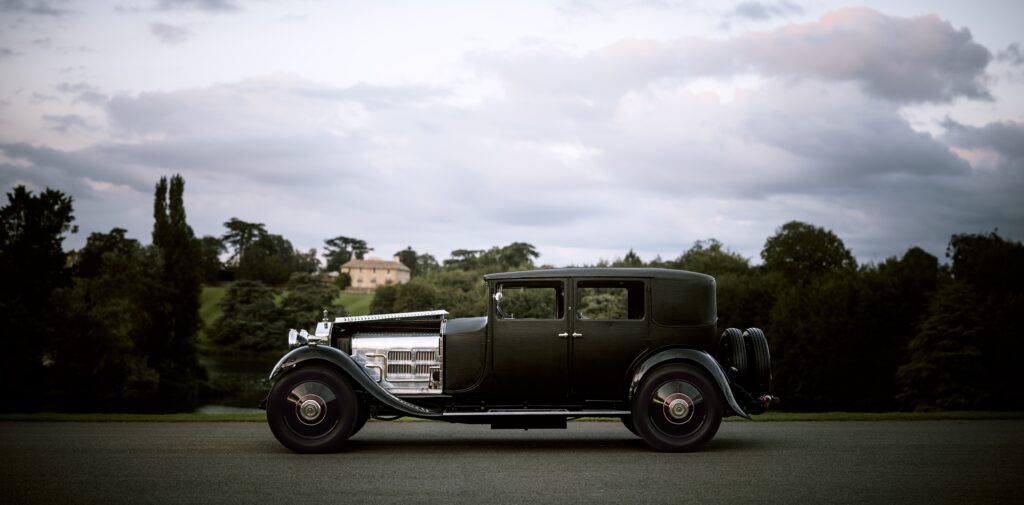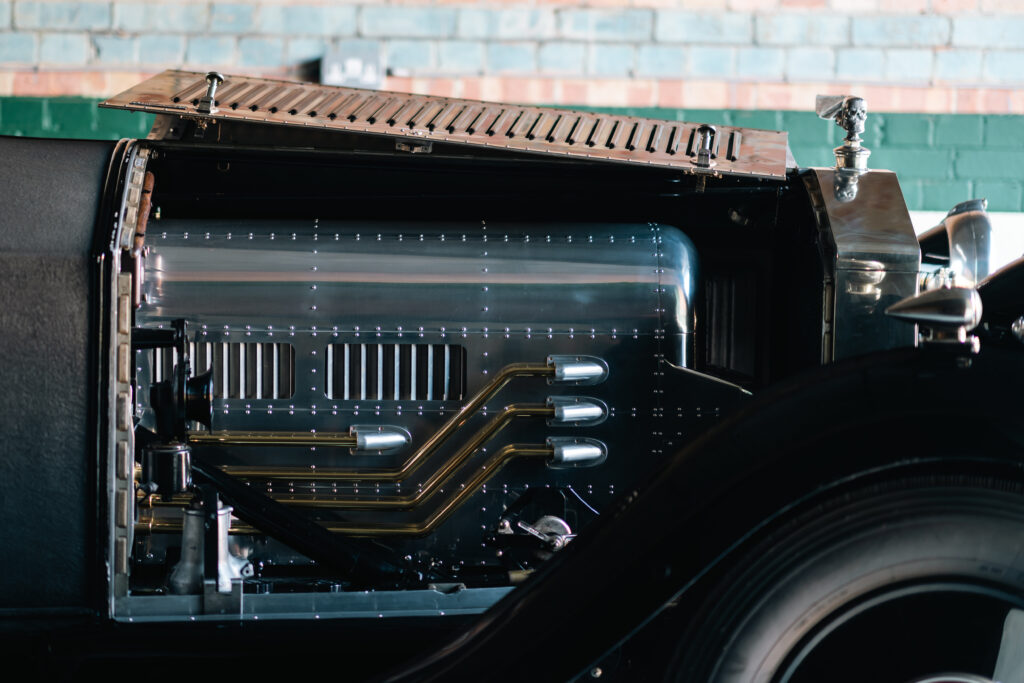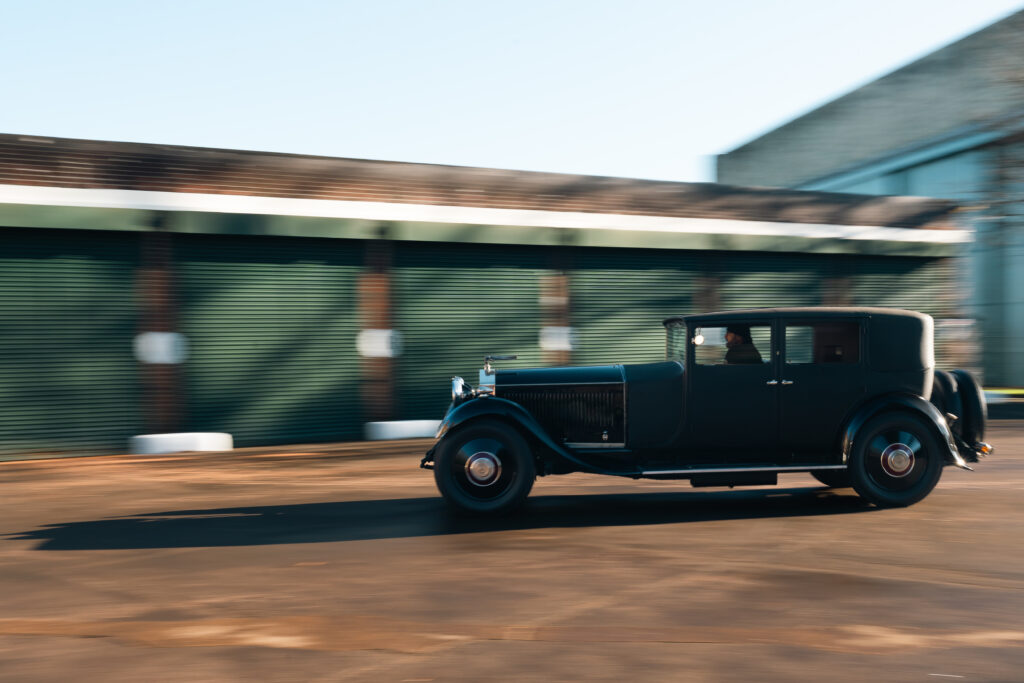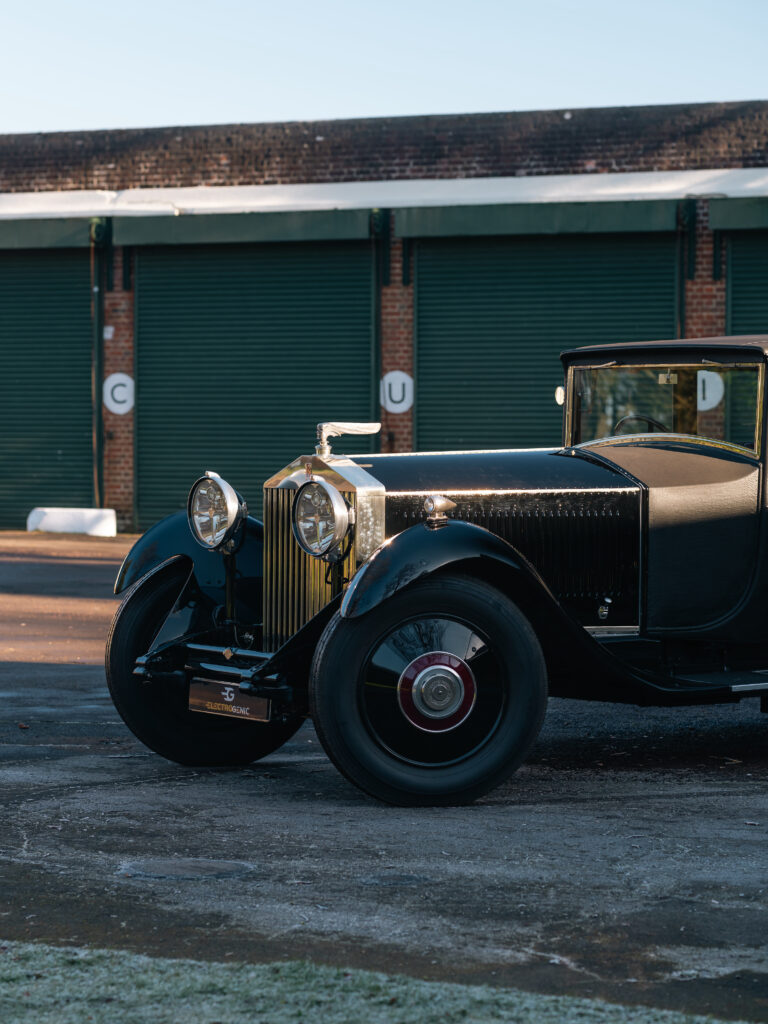The Rolls Royce Phantom II was the pinnacle of the 40/50bhp series, with a lowered frame for improved handling, servo assist to braking over 20mph and a centralised lubrication system. The 7.7l pushrod OHV engine gave this car relatively sprightly performance, and synchromesh in third and fourth gear helped driving at speed.
This car was built in 1929 and was purchased by Jason Momoa in 2021 because he had a dream – a vision of a beautiful, silent, electric Rolls Royce Phantom – a vision realised for him by Electrogenic. This electric conversion was an ultimate example of Electrogenic’s bespoke service. An extraordinary car, fitted with an impeccable electric drivetrain, executed beautifully. Nothing cut, nothing drilled; some parts removed and others added to fulfil Charles Rolls and Henry Royce’s electric dreams.
Jason filmed the journey for his “On the Roam” series, available on Discovery Plus and HBO Max. You can see our own video of the car during testing below.

Electric Phantom II specification
The battery pack is 93kWh, replacing the engine block and gearbox. As with every Electrogenic conversion, the battery configuration has been tailored specifically to the model in question; housed within the car’s original architecture, no modifications have been made to the structure itself.
The batteries feed an electric motor mounted between the chassis rails via a custom single-speed direct drive transmission delivering:
- 150kW and 310Nm of torque to the fixed reduction gear
- which delivers 1,000Nm to the prop shaft
The car has CCS rapid charging and an exquisite bluetooth sound system. The original driver’s controls have been repurposed to select the different drive modes, and a “regen” control has also been included. Driver information is provided by repurposing all the original 1929 gauges, so the interior of the car is as completely original as the exterior. Until you press the starter you can’t tell that anything has changed… and then when you pull away and feel the torque, you really understand that this beautiful engineering marvel has been equipped for the 21st Century.
All the car’s systems are seamlessly linked and managed by a bespoke suite of software – all developed in house by Electrogenic’s software engineers.
Key challenges in converting a 1929 Rolls Royce to electric drive
The first challenge was to ensure that the car kept its unique character. We wanted to lift the bonnet (the hood) with pride – to replace a work of art with a work of art. Jason was key to selecting the look. We kept the engine bay free of clutter to maximise artistic scope, gave Jason options, we refined them together and then the Electrogenic team went into action. The result is a merger of high-tech computer-aided imaging and laser-cut precision, with hand-crafted panels, 1060 hand-pressed rivets and hand-polishing to a mirror finish. We are proud that the end result is a precise realisation of the virtual concept, and we like to think that this is how Henry Royce may have built it in 1929, had the technology been available to him.

Another key challenge was devising a way to preserve and update the Phantom’s centralised, entirely mechanical, ‘through-flow’ chassis lubrication system. This is a setup that sends oil to the car’s many phosphor-bronze bushes for brake and suspension linkages, as well as other mechanical control systems – crucial to the Rolls’ trademark silken drive. The complex system was disrupted by the removal of the straight-six engine and so Electrogenic supplemented its design to ensure it continued to work as intended.
Perhaps the biggest challenge the team faced was re-designing the original cable-operated braking system to work seamlessly with the updated EV architecture. The original brake pedal and levers sat under the bulkhead in space now taken by the large battery pack, so Electrogenic supplemented the design of the braking system to fit the new layout. In a move that illustrates Electrogenic’s belief in creatively preserving the character of the car, the team re-positioned the original brake levers and cables – maintaining the original ratios of the mechanical balancing system in a new configuration – and then added to it.
The brakes are operated by a new pedal, with braking power amplified by a new hydraulic system installed between the new pedal and the original cable actuators. As a final touch, the Electrogenic team calibrated the brakes to work in tandem with the motor’s regen function, further enhancing braking performance while also boosting efficiency and range.
The braking system shows Electrogenic at its best: elegantly engineering old and new technology to work in harmony – preserving original features and character wherever possible while delivering transformed functionality and useability.
A Phantom Transformed
The different elements add up to deliver a stunning, cohesive package. The updated machine is a delight to drive, a Phantom that performs as Rolls-Royce’s engineers of a century ago would have wanted had they possessed the requisite technology: it is silent, effortless and graceful – and startlingly fast.
While transformed in terms of performance and ease of use, as with all Electrogenic conversions, the car’s tuning and calibration – honed over countless test miles – have been carefully shaped to reflect the original character of the car. Rather than transforming it beyond all recognition, the Phantom drives like a better version of its original self.
The electrified classic is now easy to start, with smooth, quiet acceleration and no-need for double de-clutching – making it much more useable in traffic. The updated braking system effortlessly slows the two tonne Rolls.
Every member of the Electrogenic team worked on this car – and we all left a little piece of our hearts in it. We can’t wait to see what adventures it gets up to with Jason.






